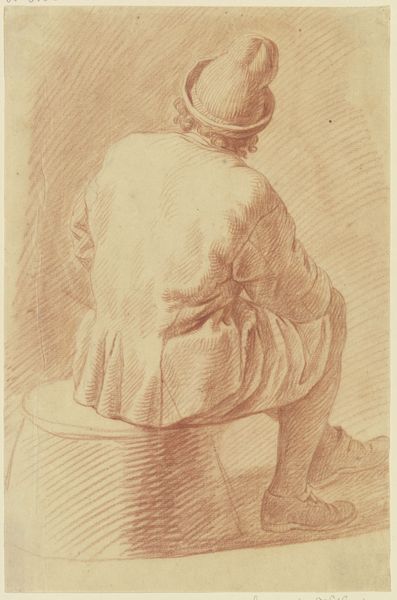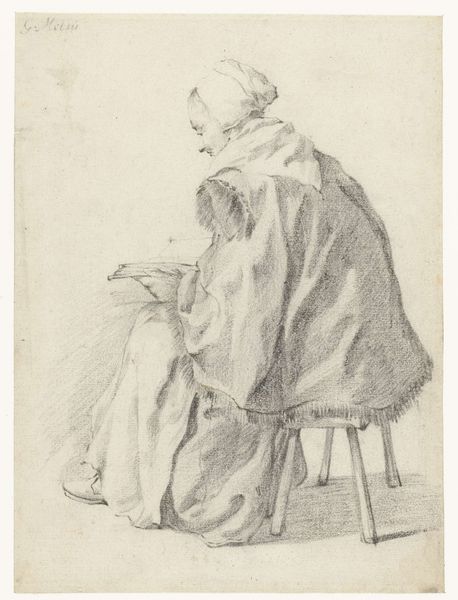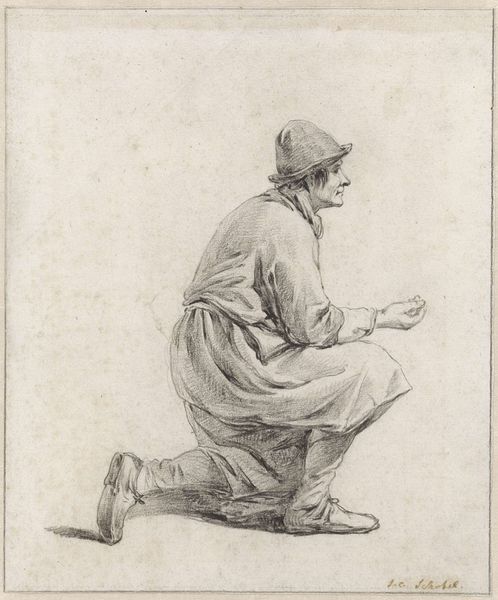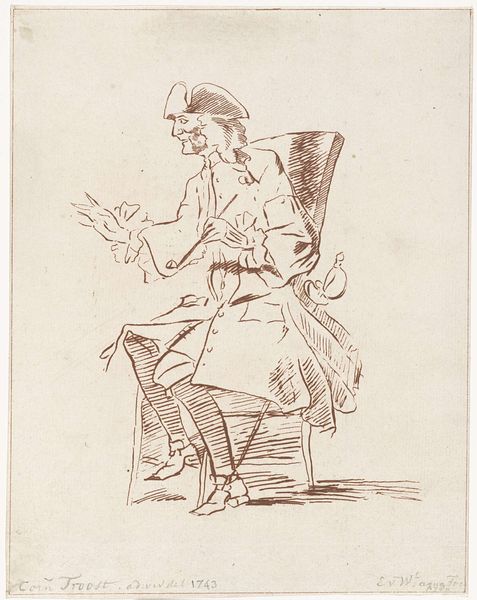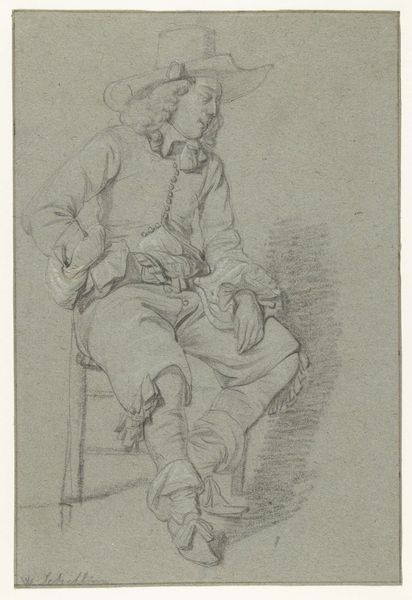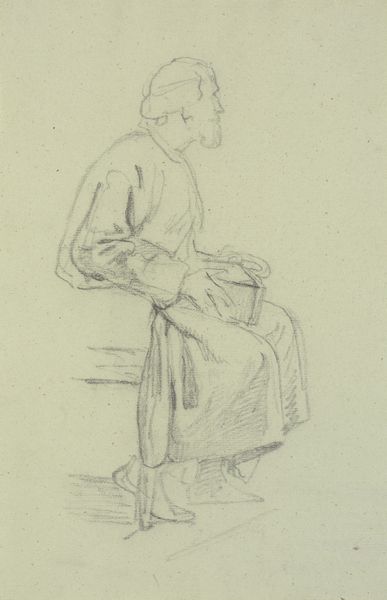
drawing, print, paper, ink, graphite, pen
#
portrait
#
drawing
# print
#
pencil sketch
#
figuration
#
paper
#
ink
#
graphite
#
sketchbook drawing
#
pen
#
portrait drawing
Dimensions: 153 × 107 mm
Copyright: Public Domain
Charles Samuel Keene created this drawing, ‘Seated Man in Tunic,’ in the 19th century. The tunic and the general style are reminiscent of classical antiquity, as reinterpreted by the Pre-Raphaelites. In Victorian England, the image of the working man was carefully curated. While the Industrial Revolution had changed the face of the country, social reformers and artists alike were concerned with the question of how work and labour were represented. Keene, who was best known for his social realist depictions of working-class life, may have been looking back to a pre-industrial era. The man's garments appear hand-spun, and the setting is a simple box. Is he a stonemason, for example, pausing on the job? To understand this work better, we would want to research popular ideas about labor at the time. We also want to know more about how the art world depicted social classes. The meaning of art shifts depending on the social and institutional circumstances that shape its creation and reception.
Comments
No comments
Be the first to comment and join the conversation on the ultimate creative platform.
